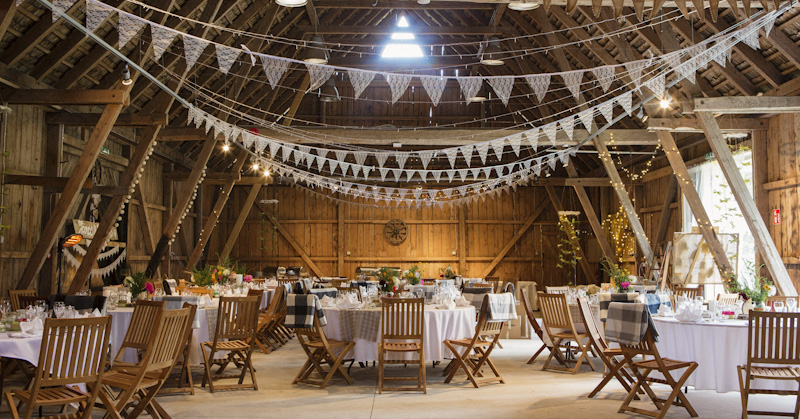Barndominiums Vs. Traditional Residences: a Detailed Contrast of Way Of Life and Functionality
The choice in between barndominiums and typical homes encompasses different elements, including way of living preferences and functional requirements. Barndominiums are identified by their open designs and flexibility, typically appealing to those that focus on public living and adaptability.
Summary of Barndominiums
Barndominiums, an unique housing pattern acquiring popularity throughout different regions, mix the rustic beauty of barn-style style with the capability of modern-day home. These distinct frameworks generally contain a steel or wood framework, incorporating open floor strategies and high ceilings with energy-efficient functions. Commonly positioned on expansive country residential properties, barndominiums offer property owners the chance to take pleasure in a calm way of living while offering ample area for numerous tasks.
The versatility of barndominiums extends past their visual charm; they can work as both living quarters and useful rooms for pastimes, workshops, or perhaps small companies. Their adaptive layout enables for easy personalization, accommodating varied household requirements and preferences. Numerous proprietors value the reduced maintenance demands linked with steel exterior siding and roof covering, adding to long-term longevity.

Characteristics of Traditional Residences
Stressing ageless style and convenience, typical homes are identified by their distinct building designs, which commonly show historical impacts and local visual appeals. Common attributes include in proportion exteriors, gabled roofing systems, and an emphasis on workmanship, leading to a cozy and welcoming atmosphere.
Standard homes typically include components such as crown molding, wainscoting, and wood flooring, improving their timeless appeal. They normally feature several rooms with specified objectives, promoting family members interaction while enabling personal privacy. visit site. The layout commonly includes official living and eating locations, which are helpful to enjoyable guests and holding family events
Outside materials such as block, timber, or stone are often used, adding to toughness and a sense of durability. Barndominium repair. Furthermore, lots of traditional homes are designed with front verandas or stoops, cultivating a feeling of area and link with the community
Landscape design plays a considerable function in conventional home layout, with well-kept gardens and pathways that improve visual allure - visit website. In general, typical homes embody a sense of nostalgia and stability, attracting those who value heritage and an extra organized living environment
Price Comparison
Commonly, an expense contrast in between barndominiums and typical homes exposes substantial distinctions in building expenditures and general financial investment. Barndominiums, often created from steel or steel frames, typically sustain reduced product and labor prices than conventional homes constructed from timber and block. The streamlined style of barndominiums can equate to lowered building times, further reducing labor costs and quickening occupancy.
Usually, the cost per square foot for a barndominium varies from $100 to $150, while conventional homes can differ commonly, commonly dropping between $150 and $300 per square foot, depending on place, materials, and layout intricacy. This cost disparity makes barndominiums an eye-catching alternative for budget-conscious buyers seeking bigger living spaces without compromising high quality.
Furthermore, barndominiums might bring about long-lasting savings through lower upkeep costs, energy performance, and insurance coverage prices. Their resilient building products usually call for less upkeep gradually compared to typical homes. Nonetheless, it is important to take into consideration that while initial expenses might be lower for barndominiums, the last financial investment will additionally depend upon individual customization and wanted amenities, which can affect the overall expenditure in both real estate kinds.
Way Of Life and Room Considerations
When considering way of living and area, barndominiums supply an unique versatility that interest a selection of house owners. These hybrid structures incorporate residential living with functional area, commonly featuring open layout that can be adapted to fit individual requirements. This adaptability is especially advantageous for families or people looking for a personalized living atmosphere, allowing for diverse uses such as office, workshops, or recreational areas.

In addition, the visit site aesthetic charm of barndominiums can accommodate both rustic and contemporary preferences, making them a functional option for different layout preferences (Barndominium repair). Eventually, the selection in between a barndominium and a typical home often depends upon exactly how well each option straightens with the homeowner's lifestyle aspirations and spatial requirements, highlighting the significance of considering personal top priorities in the decision-making procedure
Environmental Effect and Sustainability
The ecological impact and sustainability of barndominiums present engaging benefits contrasted to traditional homes. Largely created from steel and various other sturdy materials, barndominiums are typically constructed making use of recycled resources, reducing the need for brand-new materials and reducing waste. Their design typically stresses open spaces, which can cause lower energy usage for heating & cooling compared to typical homes with even more fractional formats.
Furthermore, barndominiums can include lasting features such as photovoltaic panels, rainwater harvesting systems, and progressed insulation techniques, boosting their power effectiveness. The convenience of their design allows property owners to incorporate these technologies extra perfectly than in several traditional homes, which may require extensive retrofitting.
In addition, barndominiums typically need fewer resources for building due to their simpler, much more efficient styles. This not just reduces the carbon footprint connected with building but additionally adds to a more lasting way of living. In comparison, traditional homes may include higher degrees of power expense and resource utilize throughout their lifecycle, from building and construction to upkeep. Overall, barndominiums stand for a forward-thinking strategy to sustainable living, lining up with contemporary environmental priorities.
Verdict
In recap, the option between barndominiums and standard homes depends upon specific lifestyle choices and useful requirements. Barndominiums, with their open designs and lasting products, deal with those looking for versatility and public living. On the other hand, conventional homes use defined areas that improve privacy and maintain historical visual appeals. Each alternative presents distinct advantages, necessitating mindful factor to consider of one's worths and needs when identifying the most appropriate living environment.